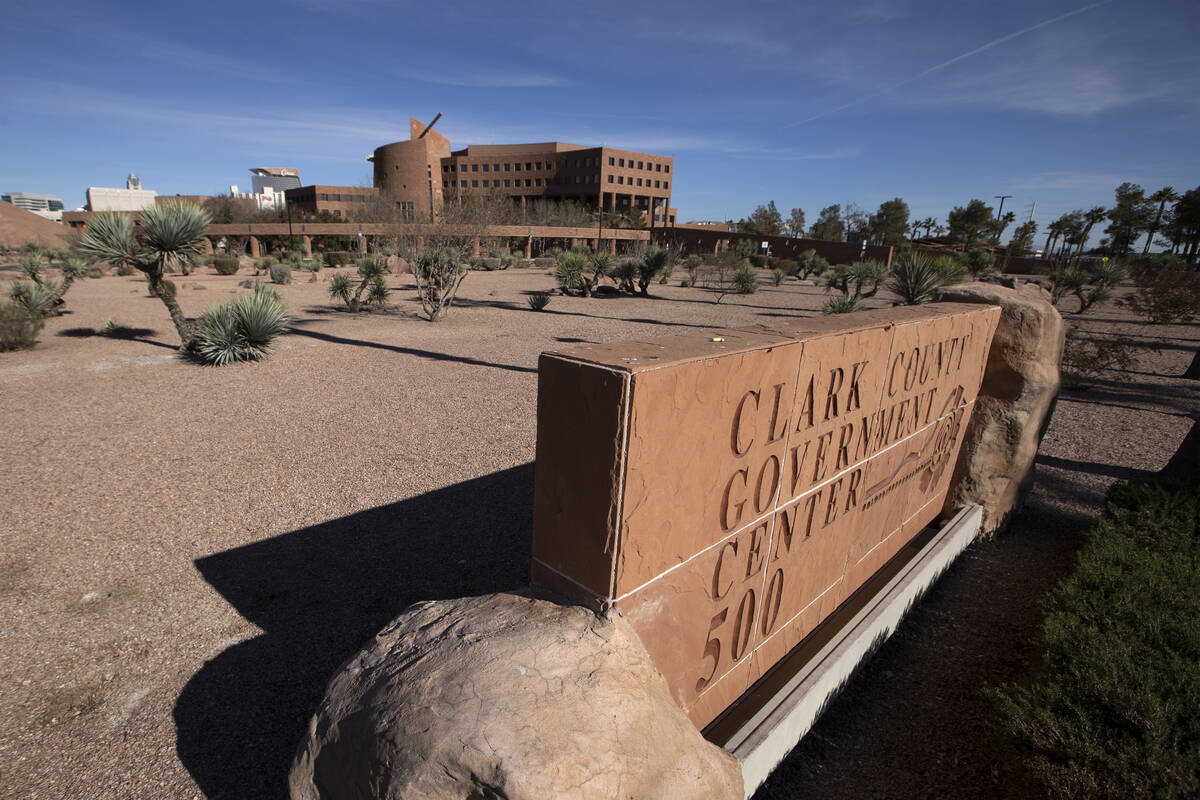Clark County adopts second Hispanic majority political district

Clark County lawmakers unanimously approved a redrawn political map on Tuesday that largely equalizes the number of people in each of the county’s seven voting districts and creates a second Hispanic-majority district.
Activists criticized the map, however, saying it created competition between Latino and Black neighborhoods, among other concerns.
The new map rectified a wide population disparity that developed over the past 10 years as a result of fast-paced growth, according to consultant Dave Heller, who was hired by the county to assist with crafting new district boundaries.
The county’s total population grew roughly 16 percent since 2010 to more than 2.2 million residents, according to the 2020 census. Officials came into the process, required after every decennial census, with the task of evening out a large gap between the county’s largest and smallest districts.
The southwest valley’s District F had 21 percent more people than the centrally located District D, county officials had said. But federal rules allow districts to deviate only by as much as 10 percent. The adopted map Tuesday reduced population variance by less than 2 percent among all districts.
“This map is fair, it is balanced,” Heller said. “It is not gerrymandered, I can assure you of that.”
Heller insisted that he tried to ensure districts were contiguous, kept communities of interest intact and showed respect for neighborhood and natural boundaries while spreading rural representation across the board and not splitting up cities.
New minority-majority
The most notable development is the creation of a second Hispanic-majority district as a result of expanding District E, which includes portions of Paradise and east Las Vegas, by adding residents from the existing Hispanic-majority District D.
“We have expanded opportunities for the Latinx community to make their voices heard and have their presence impacted on this commission,” Heller said Tuesday.
But activists expressed concern that the revised map, which goes into effect in two weeks, would pit the two largest minority groups in districts D and E against each other.
“Having Latino representation is great since right now there is none,” said Mathilda Guerrero, democracy manager at Silver State Voices. “However it will put the Latino community against the Black community.”
Hispanic residents will comprise roughly 50.01 percent of the population in both districts as a result of District D losing residents to District E, according to county figures.
The change actually represents a sizable dip in the proportion of Hispanic residents in District D, which had been as high as 58 or 59 percent, according to Commissioner William McCurdy II, who represents the district.
Shared needs
District D, which covers downtown and east Las Vegas, the Historic Westside and portions of North Las Vegas, will maintain the highest percentage of Black residents in the county with nearly 22 percent.
McCurdy said he did not fear that the new map would create a conflict between Hispanic and Black representation, noting that the two groups share similar interests: education, economic mobility and health care.
“I think there is consensus and a shared need for improvement in those areas,” he said.
But ultimately the goal of creating a second Hispanic-majority district is eventually to usher in Hispanic representation onto the commission, McCurdy said, adding that he supported that goal even if it comes at the expense of his reelection in 2024.
Commissioner Tick Segerblom, who represents District E, had requested his coverage area become a Hispanic-majority district to ensure that population’s voices were being heard, he said, noting that “it wasn’t that easy” to identify neighborhoods to bring into his district.
Up for reelection next year, Segerblom said the electoral process will play itself out. But he also said he believed that more important than who a representative might be is how they address the needs of a community.
“I’m going to run for my seat again,” he said. “I think I can represent the Hispanic community without being Hispanic.”
In 2018, Segerblom narrowly defeated Marco Hernandez in the Democratic primary for District E, winning by just 181 votes out of nearly 12,000 cast.
Other concerns
Guerrero also worried because Districts D and E have the fewest residents in the county, with roughly 317,000 each. The two largest districts — B in the northeast and G in the southeast — have about 330,000 residents, according to county figures. And she said communities of color have been historically undercounted.
The revised map also splits the Latino community from Rancho High School, according to Maria Nieto, political director for Mi Familia Vota, who said schools have provided essential services such as food distribution and COVID-19 vaccine clinics, especially to immigrant residents.
Both Nieto and Guerrero said there should have been more meaningful opportunities to weigh in on the process than one community meeting last month. The county also allowed public comment on proposed maps during back-to-back commission meetings including on Tuesday.
Contact Shea Johnson at sjohnson@reviewjournal.com or 702-383-0272. Follow @Shea_LVRJ on Twitter.